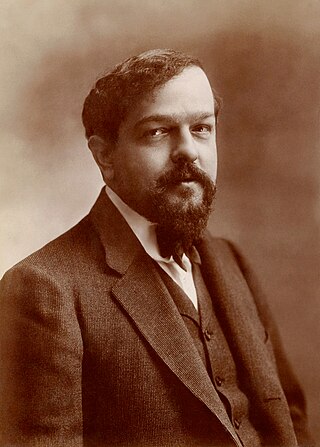
(Achille) Claude Debussy was a French composer. He is sometimes seen as the first Impressionist composer, although he vigorously rejected the term. He was among the most influential composers of the late 19th and early 20th centuries.
Impressionism in music was a movement among various composers in Western classical music whose music focuses on mood and atmosphere, "conveying the moods and emotions aroused by the subject rather than a detailed tone‐picture". "Impressionism" is a philosophical and aesthetic term borrowed from late 19th-century French painting after Monet's Impression, Sunrise. Composers were labeled Impressionists by analogy to the Impressionist painters who use starkly contrasting colors, effect of light on an object, blurry foreground and background, flattening perspective, etc. to make the observer focus their attention on the overall impression.
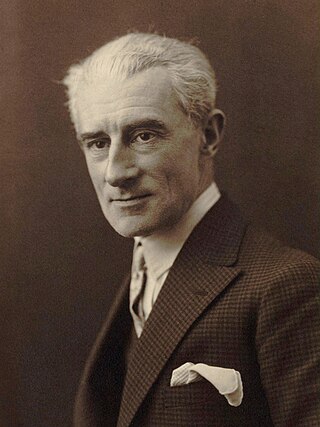
Joseph Maurice Ravel was a French composer, pianist and conductor. He is often associated with Impressionism along with his elder contemporary Claude Debussy, although both composers rejected the term. In the 1920s and 1930s Ravel was internationally regarded as France's greatest living composer.
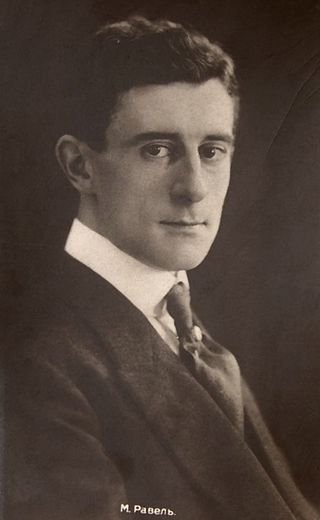
Gaspard de la nuit, M. 55 is a suite of piano pieces by Maurice Ravel, written in 1908. It has three movements, each based on a poem or fantaisie from the collection Gaspard de la Nuit – Fantaisies à la manière de Rembrandt et de Callot completed in 1836 by Aloysius Bertrand. The work was premiered in Paris, on January 9, 1909, by Ricardo Viñes.
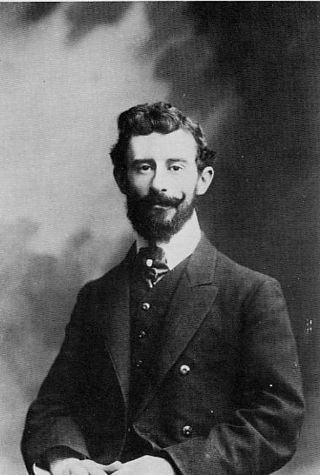
Jeux d'eau is a piece for solo piano by Maurice Ravel, composed in 1901 and given its first public performance the following year. The title is variously translated as "Fountains", "Playing Water" or literally "Water Games". At the time of writing Jeux d'eau, Ravel was a student of Gabriel Fauré, to whom the piece is dedicated. The work is in a single movement, typically lasting between four and half and six minutes in performance.
Les Apaches was a group of musicians, writers and artists which formed in Paris, France in 1903. The core was formed by the French composer Maurice Ravel, the Spanish pianist Ricardo Viñes and the writer and critic Michel-Dimitri Calvocoressi. The group was private but never formal, and the wider membership was fluid; over 20 unofficial members would attend meetings of Les Apaches until it came to an end during World War I. During their active years, Les Apaches met weekly. The meetings were a chance for the members to perform and show new works or ideas to a small group, discuss contemporary artistic interests and collaborate.
Désiré-Émile Inghelbrecht was a French composer, conductor and writer.

Pavane pour une infante défunte is a work for solo piano by Maurice Ravel, written in 1899 while the French composer was studying at the Conservatoire de Paris under Gabriel Fauré. Ravel published an orchestral version in 1910 using two flutes, an oboe, two clarinets, two bassoons, two horns, harp, and strings.

Rapsodie espagnole is an orchestral rhapsody written by Maurice Ravel. Composed between 1907 and 1908, the Rapsodie is one of Ravel's first major works for orchestra. It was first performed in Paris in 1908 and quickly entered the international repertoire. The piece draws on the composer's Spanish heritage and is one of several of his works set in or reflecting Spain.
Monique Haas was a French pianist.

La mer, trois esquisses symphoniques pour orchestre, or simply La mer, L. 109, CD. 111, is an orchestral composition by the French composer Claude Debussy.
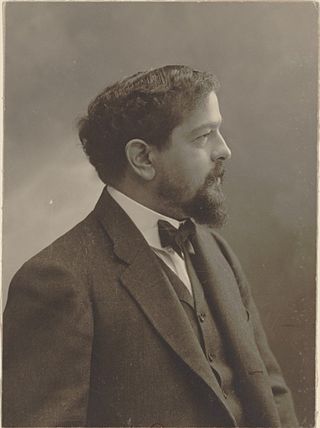
Prélude à l'après-midi d'un faune, known in English as Prelude to the Afternoon of a Faun, is a symphonic poem for orchestra by Claude Debussy, approximately 10 minutes in duration. It was composed in 1894 and first performed in Paris on 22 December 1894, conducted by Gustave Doret. The flute solo was played by Georges Barrère.
The Petrushka chord is a recurring polytonal device used in Igor Stravinsky's ballet Petrushka and in later music. These two major triads, C major and F♯ major – a tritone apart – clash, "horribly with each other", when sounded together and create a dissonant chord.
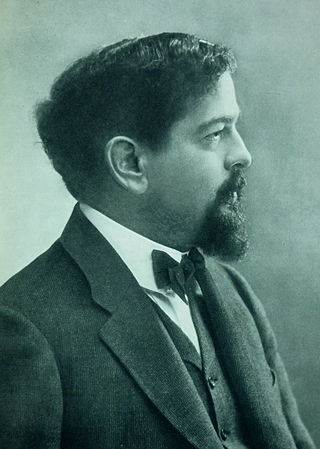
Estampes ("Prints"), L.100, is a composition for solo piano by Claude Debussy. It was finished in 1903. The first performance of the work was given by Ricardo Viñes at the Salle Érard of the Société Nationale de Musique in Paris on 9 January 1904.

Des pas sur la neige is a musical composition by French composer Claude Debussy. It is the sixth piece in the composer's first book of Préludes, written between late 1909 and early 1910. The title is in French and translates to "Footprints in the Snow" The piece is 36 measures long and takes approximately three and a half to four and a half minutes to play. It is in the key of D minor. The prelude was, along with Danseuses de Delphes, one of the preludes Debussy believed should be played "entre quatre-z-yeux" meaning intimately, as if privately.
Catherine Collard was a French classical pianist.
La fille aux cheveux de lin is a musical composition for solo piano by French composer Claude Debussy. It is the eighth piece in the composer's first book of Préludes, written between late 1909 and early 1910. The title is in French and translates roughly to "The Girl with the Flaxen Hair". The piece is 39 measures long and takes approximately two and a half minutes to play. It is in the key of G♭ major.
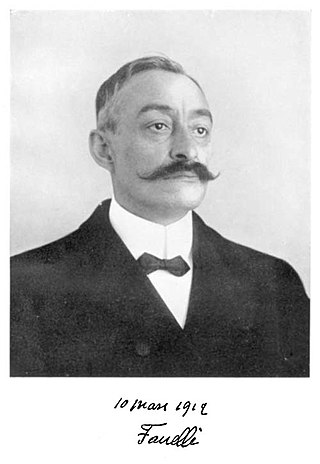
Ernest Fanelli was a French composer who is known for his works which have been considered as precursing Impressionism. He gained renown when his symphonic poem Thèbes premiered in Paris; this was a work incorporating elements associated with music ahead of its time, such as unique harmonies, extended chords, and polytonality.
Two Pieces for Piano is a work for piano solo composed in 1921 by John Ireland (1879–1962).
Images is a suite of six compositions for solo piano by Claude Debussy. They were published in two books/series, each consisting of three pieces. These works are distinct from Debussy's Images pour orchestre. The first book was composed between 1901 and 1905, and the second book was composed in 1907. The total duration is approximately 30 minutes. With respect to the first series of Images, Debussy wrote to his publisher, Jacques Durand: "Without false pride, I feel that these three pieces hold together well, and that they will find their place in the literature of the piano ... to the left of Schumann, or to the right of Chopin... "










